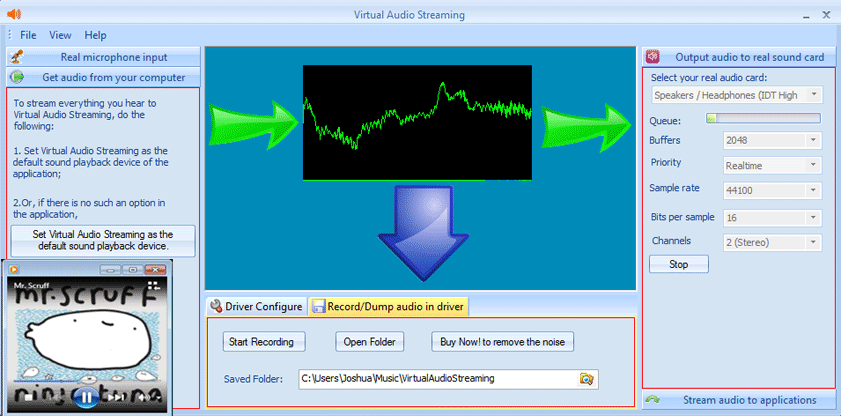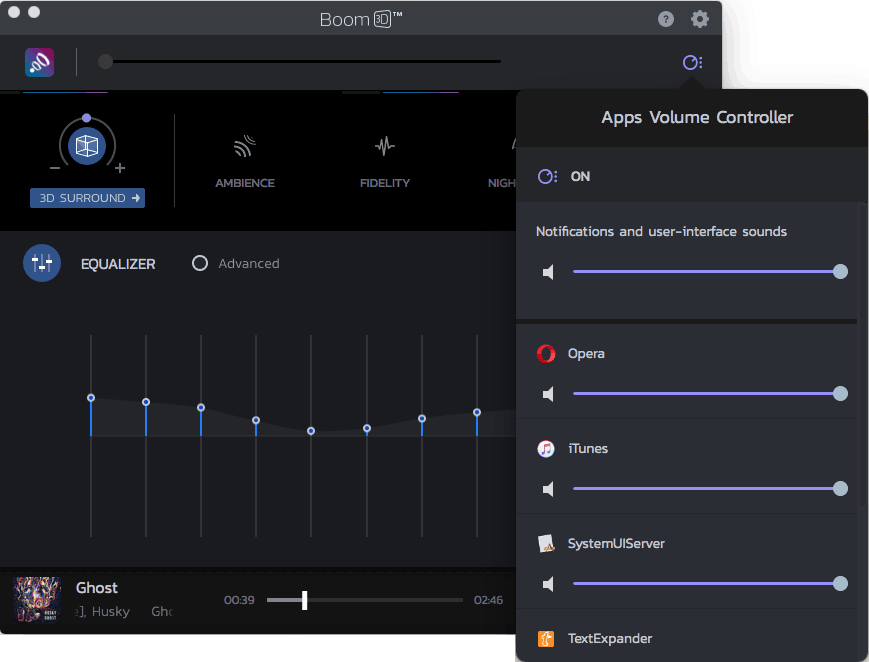
 Record / Broadcast the sound of all applications and your MIC voice at the same time (mixed or not). Record / Broadcast the sound of all applications. You can run VSC with command line parameter “/m” to run minimized, and “/r” to start previous audio transfer automatically. Have any questions? Please contact us here. Want to add “virtual sound card” feature to your applications? Please try our VSC SDK. – Record audio – Stream audio – Broadcast audio – Change voice –ĭownload and install to have a wonderful experience right now! You can also use it to create numbers of Virtual Sound Card instances to fulfill your special requirements. You can use it to record, modify or broadcast all the sound in your system. ConclusionĪlthough it can be definitely qualified as hard to use, Virtual Audio Cable promises to pass the audio signal with no quality loss and can prove handy once you get the hang of it.E2eSoft VSC is a Sound Card Emulator, which emulates a sound card in your system and works like a real one. If more than one application sends audio streams to Virtual Audio Cable, the driver mixes the signal together. The Audio Repeater application is the one that does the actual transfer, from the recording port to the other audio device. When the configuration process is over, you need to open an audio producing program that allows you to choose a playback device. You can also enable the stream buffer watermark, volume control, as well as channel mixing. Setting the maximum instances number, the sampling rate and bits per sample range and the channel number are just some of the options that you can modify according to your preferences.
Record / Broadcast the sound of all applications and your MIC voice at the same time (mixed or not). Record / Broadcast the sound of all applications. You can run VSC with command line parameter “/m” to run minimized, and “/r” to start previous audio transfer automatically. Have any questions? Please contact us here. Want to add “virtual sound card” feature to your applications? Please try our VSC SDK. – Record audio – Stream audio – Broadcast audio – Change voice –ĭownload and install to have a wonderful experience right now! You can also use it to create numbers of Virtual Sound Card instances to fulfill your special requirements. You can use it to record, modify or broadcast all the sound in your system. ConclusionĪlthough it can be definitely qualified as hard to use, Virtual Audio Cable promises to pass the audio signal with no quality loss and can prove handy once you get the hang of it.E2eSoft VSC is a Sound Card Emulator, which emulates a sound card in your system and works like a real one. If more than one application sends audio streams to Virtual Audio Cable, the driver mixes the signal together. The Audio Repeater application is the one that does the actual transfer, from the recording port to the other audio device. When the configuration process is over, you need to open an audio producing program that allows you to choose a playback device. You can also enable the stream buffer watermark, volume control, as well as channel mixing. Setting the maximum instances number, the sampling rate and bits per sample range and the channel number are just some of the options that you can modify according to your preferences. 
On the other hand, there are various other parameters to configure for each cable. You can view the number of detected streams and change the worker thread number and priority.

Adding a new one displays a new item in the monitoring pane. The first item you can change is the number of virtual cables created by the program. Some of the displayed parameters concern the driver, while others refer to each cable. Therefore, before starting, it is strongly recommended to go through all the documentation carefully. While the customizatin process might seem easy due to the organized interface, making the application work is quite a challenge. Once you install the driver, you are able to access its control panel in order to configure the working parameters.

Practically, the input port records the audio signal (from a music player, for example) and sends it to the destination program (such as a sound processor or analyzer) using the output port. This software tool introduces the 'virtual cables', which refer to a set of virtual audio devices containing input and output ports. Virtual Audio Cable is a multimedia driver designed to connect one or more audio applications in order to transfer audio streams between them.








 0 kommentar(er)
0 kommentar(er)
